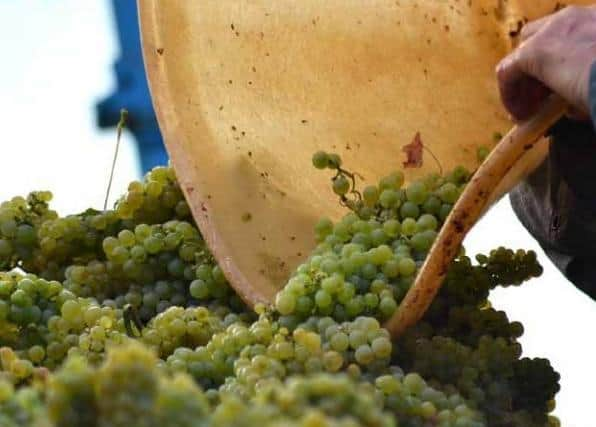Matt Monk of the Whalley Wine Shop explains how winemakers ensure they get the pick of a crop
and live on Freeview channel 276
Moving from vineyard to vineyard, sometimes only picking a few rows of vines, then back in the van and onto the next place, sometimes an hour’s drive away.
But how does this start? It is all down to the weather and the vines, usually it’s a combination of when the flowering starts and when the sugar and acidity in the grape juice are at the right point for the style of wine that’s going to be made. This usually means constant testing throughout the day, even a few hours extra sunshine can make a big difference. As always a weather eye on the clouds is a must, rain during harvest can mean the grape becoming swollen and watery. When everything is at the best it could be, the button is pressed and the teams spring into action.
Advertisement
Hide AdAdvertisement
Hide AdI’ve managed to be at two grape harvests, in Burgundy, France. One in 2013, started in late September and into October, unfortunately there had been some rain previously combined with warm muggy days. This meant we had to be extra vigilant when sorting the grapes, and nearly half the crop was discarded because they were simply not good enough.


I know this as after driving over ten hours from Blackpool, through Dover and Calais, and onto Beaune, all the while dreaming of a shower, hot food and sleep, we spent five hours at the sorting table cutting out the bad grapes from the good and standing knee deep in a pile of sticky discarded grapes. The days were long and cool by the time we left for home nine days later, every muscle was aching and I had a newfound respect for my glass of wine.
In 2015 it was a little different; the sun was shining and we were harvesting in August, a good month- and-a-half earlier than my last experience.
We picked some fantastic looking grapes, and this time instead of trench foot, like last time, we were more concerned about sunburn and hydration.
Advertisement
Hide AdAdvertisement
Hide AdAll the winemakers provide a sturdy lunch for the workers, and maybe a little ‘Apero’ at the end of the long days. Though at the end of my stint, the weather had the last laugh.
Both my experiences of the harvest showed me what went into the decisions to start harvest, how nature had influenced those decisions and the style of wine being made. It was tough work, but secretly I harbour the desire to do one more stint, though my knees and back may have other ideas.
But this is just a tiny view of harvest. Some winemakers are making a sweeter style of wine than others, this can mean delaying harvest until the sugar levels are higher, or even to the point where the grapes have started to look like raisins.
Of course, there are easier ways to harvest, there are lots of mechanical tools and vehicles to speed up the process, sometimes in a quarter of the time that a group of pickers can do it. But sometimes the vineyards are too steep, or the cost of the hire of the equipment is prohibitive, or the grapes are too delicate to go through the rigours of a mechanical harvesting machine.
Te Quiero White Field Plan 2020 £8.49
Advertisement
Hide AdAdvertisement
Hide AdFrom the vineyards around La Mancha in Spain, the winemakers have searched out for small plots of old varieties, sometimes growing together in one plot. This creates an interesting decision to be made as to when to harvest, when some grapes aren’t ready, some are at peak perfection and others maybe too ripe, but when vinified all together they make a great wine, with flavours of ripe stone fruit like apricot and nectarine, but with enough acidity to keep it fresh and balanced. Great with seafood and warm salads.
Baglio Gibellina u...Passimiento 2019 £10.99
This wine comes from the vineyards of Sicily. The winemaker uses two different grapes, the Frappato is harvested slightly early. This maintains a certain level of freshness in the wine, giving a crunchy fruit note. The Nero D’Avola is left to hang on the vine a lot longer, so the grapes start to slightly dry out, increasing the sugar content. Once vinified, the wines are blended together.
This wine is bursting with fresh red berry fruits, including cherry and plum. The tannins are smooth and there’s a touch of savoury chocolate at the finish. A great wine to go with pasta dishes and some cheeses.
Yealands Estate Noble Riesling 2019 £15.99
A classic late harvest sweet Riesling, the grapes are left to hang for as long as possible and dehydrate as much as possible. Once picked they are delicately handled and lightly pressed. The resulting wine is opulent, rich and sweet. Lots of honeyed apricots, mandarin and baked stone fruits. This wine, lightly chilled, will go with most fruit desserts, and my favourite match, blue cheeses.